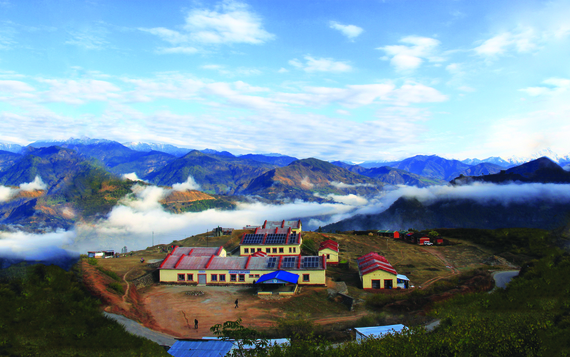"Every citizen shall have the right to basic health services free of cost from the State."
- Interim constitution of Nepal
Preventable Deaths
Among the over 8,700 victims of the earthquake that struck Nepal on April 25, 2015, the vast majority of them were living in rural areas. In Sindhupalchok, the district that sustained the greatest absolute number of deaths, over 1% (3,400) of the entire population perished. Nearly all of these deaths could have been prevented with poverty alleviation to construct homes, and with better governance to enforce building codes.
The tragic roots of these deaths, poverty and poor governance, are widespread in rural communities throughout the world. In Nepal and many other countries, rural populations suffer the most grave, tragic, and appalling indignities and injustices. Facing a dire lack of basic services and economic opportunities, rural Nepal's men, and many of its women, are leaving the countryside in large numbers. This mass migration has deep impact on the structure of Nepal's families, communities, and larger society. In migration, Nepal's rural people are then isolated from their families and often subjugated to harsh working conditions and daily insults. In a rapidly urbanizing world, it is frequently forgotten that humanity's destiny is tied to the fate of its rural communities.
Rural Investment
The only way out of this vicious trap is through deep investment in rural areas. The oft-cited maxim that "budgets are moral documents" is particularly true here--we can look at the ledger sheet of private and public investment in rural communities to judge how we as a society are doing. With this in mind, the healthcare system has truly lost its way. Rural districts such as Achham, where I work with Nyaya Health Nepal (Possible Health), are consistently underfinanced; per-capita spending is two to three times lower than national levels. The majority of major public and private healthcare institutions are clustered in a few cities. For rural patients referred to these cities, much of healthcare is far too costly for them to access. And even when they do have access, frequently they are charged excess fees for interventions that confer little benefit.
The expansion of investment in rural districts demands partnerships that can deliver results. We face a deep lack of confidence in rural places, which prevents a desperately needed investment. This is why, over the coming years, we endeavor to create the "Achham Model" of durable healthcare. This will build off the work that the District Health Office of Achham, the Ministry of Health and Population, and Nyaya Health Nepal (Possible) have been doing since 2006, when we partnered to run the government-owned Bayalpata Hospital.
The Achham Model
We aim to prove three things: 1) public sector healthcare can work for all people, regardless of caste or personal economics; 2) we can build one of Nepal's best workplace environments that can retain the best and brightest of the rural workforce; and 3) we can secure private investment in healthcare without pursuing the broken and morally bankrupt fee-for-service revenue model.
- Removing all point-of-care user fees ("fee for service") and instead focusing revenue on private and government sources who hold us accountable to quality;
- Redesigning care systems to emphasize longitudinal care and shifting care delivery to be closer to their homes;
- Working with the national and local government to deliver authority and regulation to hold healthcare accountable to its people.
To date, Nyaya Health Nepal (Possible) has treated over 250,000 patients at less than 400 rupees per patient without charging patients anything. We have implemented an operating room led by two of Nepal's most dynamic MD-GP and MD-orthopedic surgeons. We are a dynamic organization that employs over 120 staff members full time, nearly all of whom are from the Far West. Over the next three years we are aiming to expand the reach of the endeavor from a targeted catchment area of 14 VDCs to the entire district of Achham. We will continue to work exclusively within the public sector, government-owned facilities and, as per constitutional mandate, avoid user fees to patients. To track progress and hold us accountable, we have devised six Key Performance Metrics along with an additional sixty metrics. This will measure the quality healthcare standard for the entire population for both acute and chronic conditions. Part of this includes proving our ability to reduce under-two child mortality.
Crucially, we will prove that the government can invest financially in this Public-Private Partnership model, and that it can delegate important elements of healthcare delivery to Nyaya Health Nepal (Possible). In return, we will demonstrate to our funders that the government is serious about investing in rural communities and in impact-oriented services. The government must then rigorously regulate and hold us accountable to the care that is delivered. Over time, we will integrate within universal health insurance as well. And we will prove that investment can yield high social returns and transform the post-earthquake healthcare sector throughout the country.

